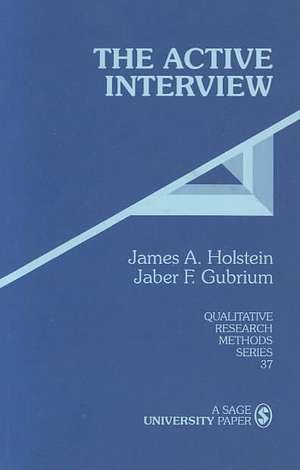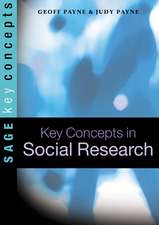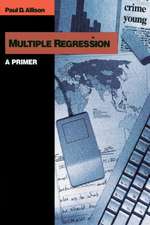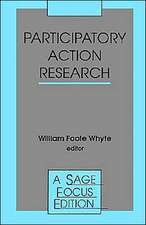The Active Interview: Qualitative Research Methods, cartea 37
Autor James A. Holstein, Jaber F. Gubriumen Limba Engleză Paperback – 11 iun 1995
Din seria Qualitative Research Methods
-
 Preț: 322.19 lei
Preț: 322.19 lei -
 Preț: 273.68 lei
Preț: 273.68 lei -
 Preț: 286.15 lei
Preț: 286.15 lei -
 Preț: 323.44 lei
Preț: 323.44 lei -
 Preț: 323.15 lei
Preț: 323.15 lei -
 Preț: 321.79 lei
Preț: 321.79 lei -
 Preț: 323.70 lei
Preț: 323.70 lei -
 Preț: 321.52 lei
Preț: 321.52 lei -
 Preț: 322.05 lei
Preț: 322.05 lei -
 Preț: 134.60 lei
Preț: 134.60 lei -
 Preț: 288.79 lei
Preț: 288.79 lei -
 Preț: 290.33 lei
Preț: 290.33 lei -
 Preț: 317.26 lei
Preț: 317.26 lei -
 Preț: 287.82 lei
Preț: 287.82 lei -
 Preț: 290.54 lei
Preț: 290.54 lei -
 Preț: 289.56 lei
Preț: 289.56 lei -
 Preț: 288.04 lei
Preț: 288.04 lei - 18%
 Preț: 715.81 lei
Preț: 715.81 lei -
 Preț: 291.07 lei
Preț: 291.07 lei -
 Preț: 290.69 lei
Preț: 290.69 lei -
 Preț: 288.41 lei
Preț: 288.41 lei -
 Preț: 289.18 lei
Preț: 289.18 lei -
 Preț: 317.26 lei
Preț: 317.26 lei -
 Preț: 288.19 lei
Preț: 288.19 lei -
 Preț: 290.33 lei
Preț: 290.33 lei -
 Preț: 290.69 lei
Preț: 290.69 lei -
 Preț: 317.10 lei
Preț: 317.10 lei -
 Preț: 315.75 lei
Preț: 315.75 lei -
 Preț: 290.69 lei
Preț: 290.69 lei -
 Preț: 290.33 lei
Preț: 290.33 lei -
 Preț: 315.36 lei
Preț: 315.36 lei -
 Preț: 290.54 lei
Preț: 290.54 lei -
 Preț: 290.69 lei
Preț: 290.69 lei -
 Preț: 290.69 lei
Preț: 290.69 lei -
 Preț: 291.07 lei
Preț: 291.07 lei -
 Preț: 285.77 lei
Preț: 285.77 lei -
 Preț: 289.77 lei
Preț: 289.77 lei -
 Preț: 288.04 lei
Preț: 288.04 lei -
 Preț: 289.95 lei
Preț: 289.95 lei -
 Preț: 285.62 lei
Preț: 285.62 lei -
 Preț: 288.19 lei
Preț: 288.19 lei -
 Preț: 285.62 lei
Preț: 285.62 lei -
 Preț: 316.12 lei
Preț: 316.12 lei -
 Preț: 314.76 lei
Preț: 314.76 lei
Preț: 315.36 lei
Nou
Puncte Express: 473
Preț estimativ în valută:
60.36€ • 65.59$ • 50.74£
60.36€ • 65.59$ • 50.74£
Carte tipărită la comandă
Livrare economică 22 aprilie-06 mai
Livrare express 15-21 martie pentru 25.85 lei
Preluare comenzi: 021 569.72.76
Specificații
ISBN-13: 9780803958951
ISBN-10: 0803958951
Pagini: 96
Ilustrații: black & white illustrations
Dimensiuni: 140 x 216 x 6 mm
Greutate: 0.11 kg
Ediția:1
Editura: SAGE Publications
Colecția Sage Publications, Inc
Seria Qualitative Research Methods
Locul publicării:Thousand Oaks, United States
ISBN-10: 0803958951
Pagini: 96
Ilustrații: black & white illustrations
Dimensiuni: 140 x 216 x 6 mm
Greutate: 0.11 kg
Ediția:1
Editura: SAGE Publications
Colecția Sage Publications, Inc
Seria Qualitative Research Methods
Locul publicării:Thousand Oaks, United States
Cuprins
Introduction
The Active Interview in Perspective
Assigned Competence and Respondent Selection
Narrative Resources
The Active Interviewer
Constructing Meaning within the Interview
Multivocality and Multiple Respondents
Rethinking Interview Procedures
The Active Interview in Perspective
Assigned Competence and Respondent Selection
Narrative Resources
The Active Interviewer
Constructing Meaning within the Interview
Multivocality and Multiple Respondents
Rethinking Interview Procedures
Notă biografică
James A. Holstein is professor of sociology in the Department of Social and Cultural Sciences at Marquette University. His research and writing projects have addressed social problems, deviance and social control, mental health and illness, family, and the self, all approached from an ethnomethodologically- informed, constructionist perspective.
Descriere
This guide outlines the differences between active interviews and traditional interviews and give novice researchers clear guidelines on conducting a successful interview.











